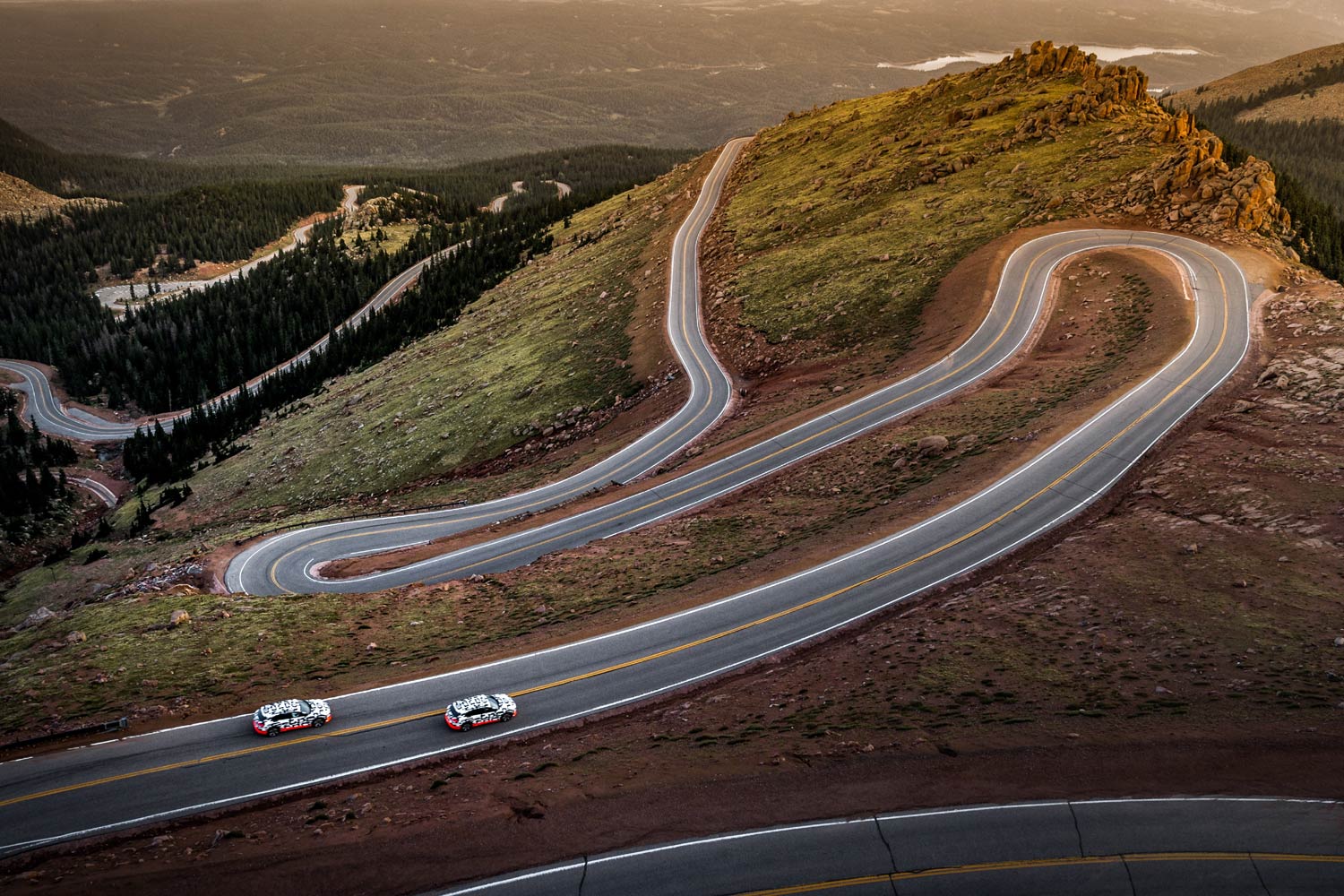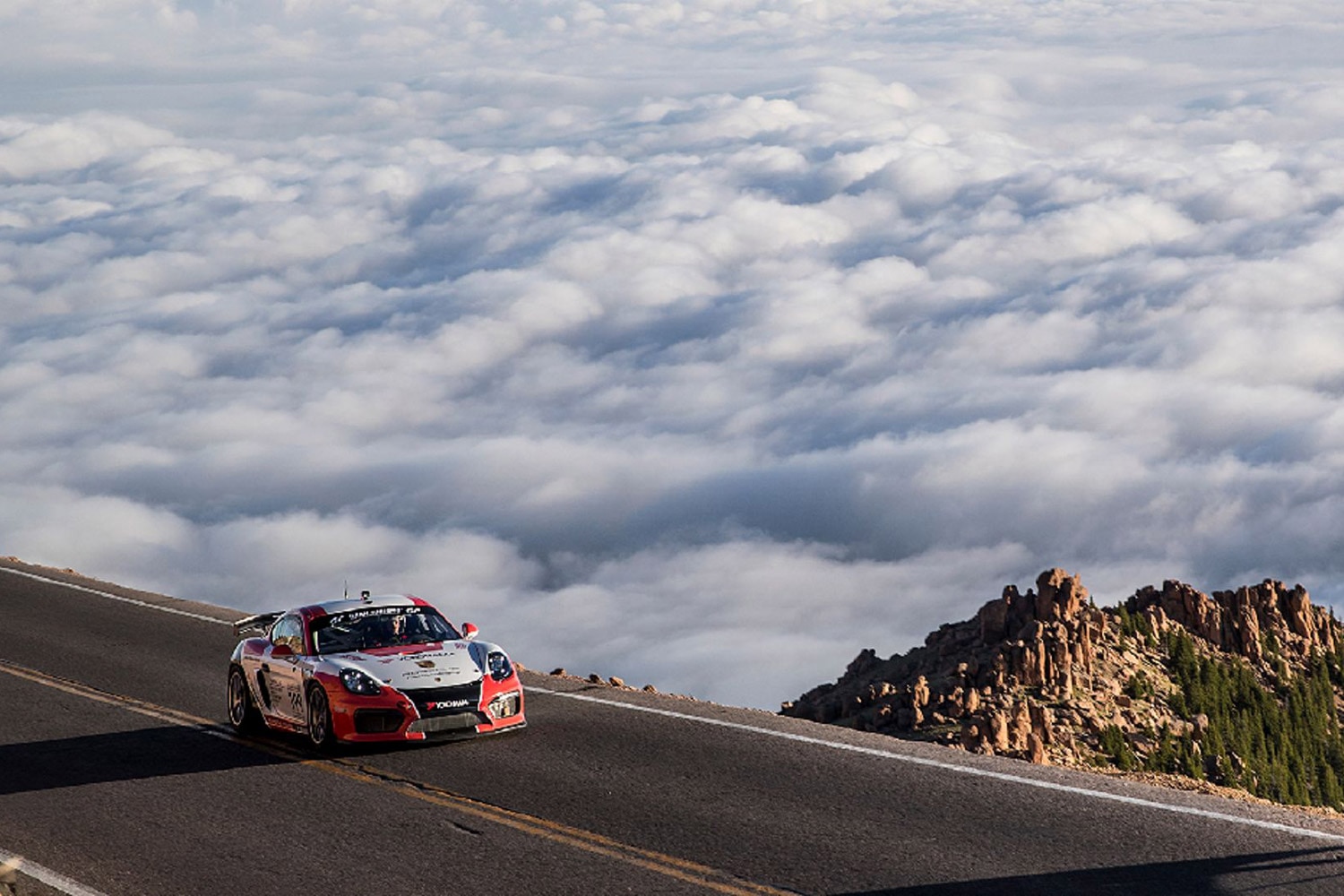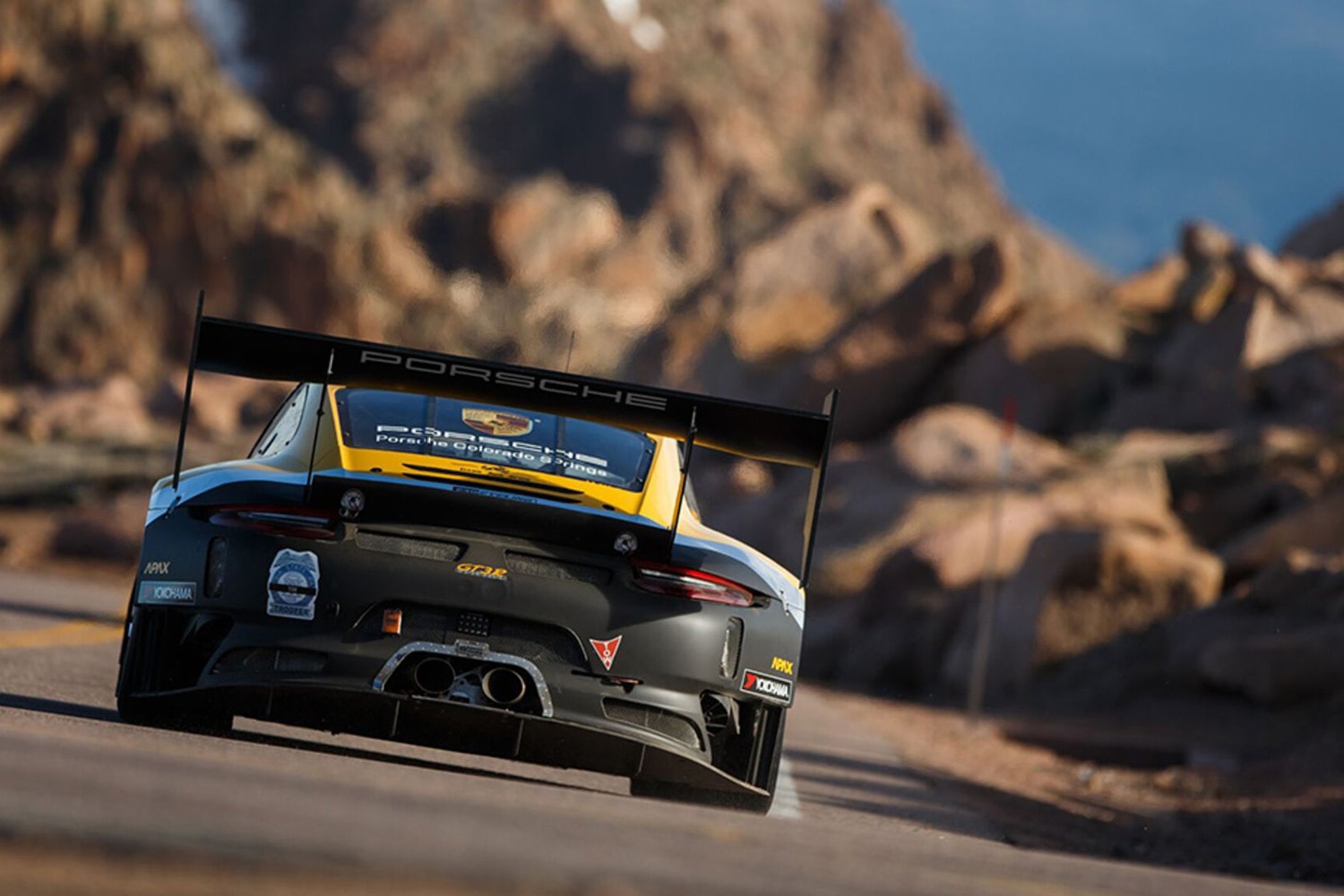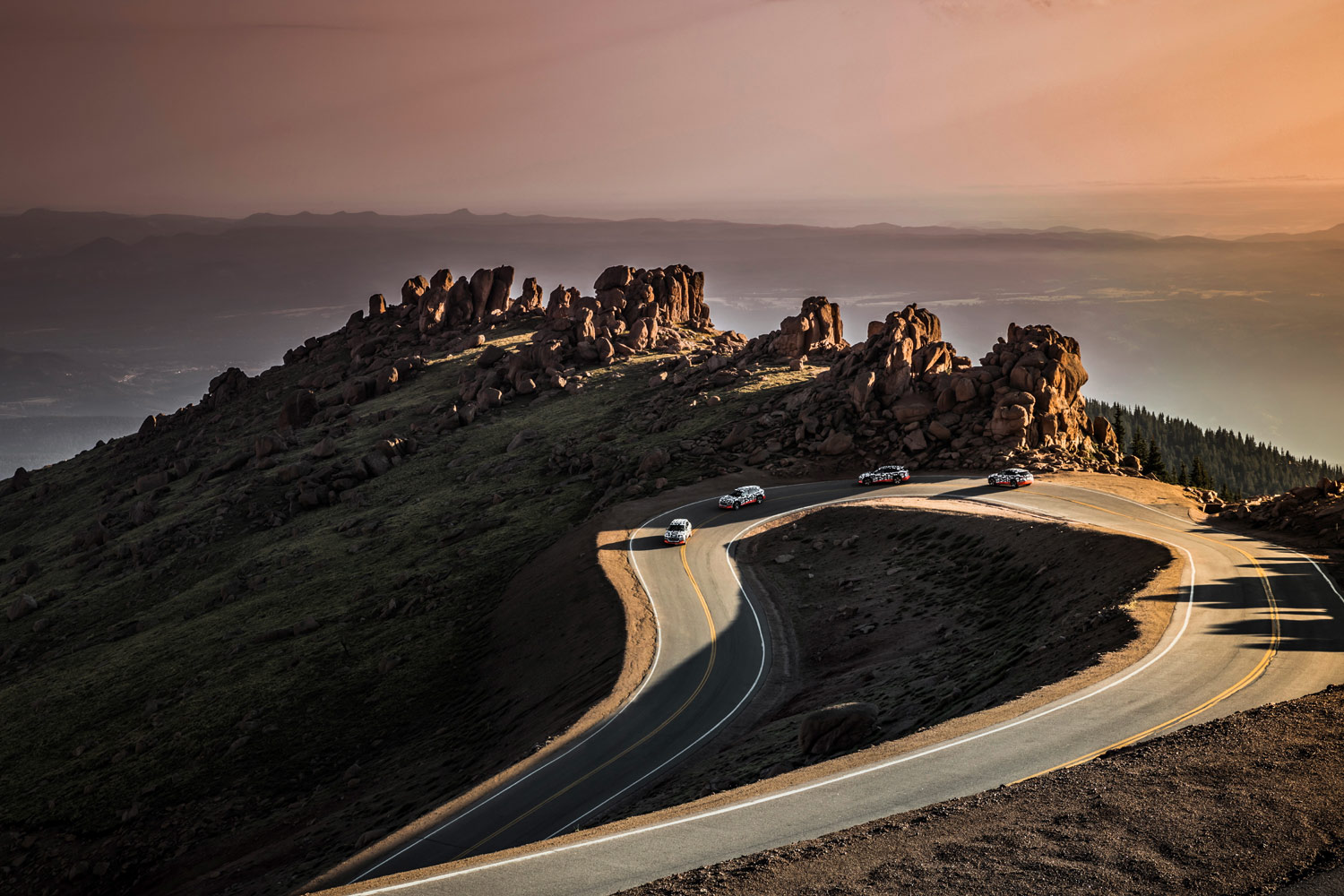What You Need to Know About Pikes Peak
The United States' second-oldest motorsports event is a 14,000-foot-high bridge between gas-powered and EV racing.
 Audi
Audi
Automakers participating directly in motorsports is a time-honored tradition that dates back to the very beginning of the automobile. The Pikes Peak International Hill Climb is a perfect example.
Challenging and with an extensive history, the competition has become a must-attend event for various manufacturers — from Porsche and Audi to Subaru and Acura — seeking to conquer its twists and turns.
 Porsche
Porsche
Pikes Peak: The Race to the Clouds
Pikes Peak is a mountain in Colorado and the location of a circuitous and at times treacherous road that runs from its base all the way to the summit. Recently paved but once entirely gravel, it retains a reputation for the risks associated with tackling it at a high rate of speed.
First held in 1916 when it was known by the poetic name of The Race to the Clouds — in reference to the summit's high altitude — the Pikes Peak International Hill Climb is the second-oldest automotive race in the U.S. after the first Chicago Times-Herald event of 1895.
 Porsche
Porsche
Although the distance traveled on the segment of the road used in competition is just under 12.5 miles, drivers ascend an astonishing 4,720 feet from start to finish at the peak, more than 14,000 feet above sea level. This elevation change is not found on any other racecourse in the world.
The Hill Climb attracts nearly 100 competitors each year and costs $1,000 a day to participate, with up to five days of testing sessions available for racers interested in testing their skills against the mountain and attempting to set a new record time.
Racing is divided into classes, ranging from Unlimited, with no restrictions on design or horsepower, to Exhibition, which often includes prototypes from car companies. For example, Acura entered four vehicles in the 2023 Hill Climb competition, including two Integra race cars and an exotic-looking NSX Type S Active Aero Study.

The Reasons Automakers Flock to Pikes Peak
The International Hill Climb is incredibly demanding, not just on the talents of the drivers racing on a road that contains more than 150 turns — with no guardrails — but also on machinery. As a result, there are two primary reasons why automakers show up at Pikes Peak.
The publicity of such an exhibition is attractive to performance-vehicle manufacturers. It's also a chance to show off unusual machines that might not fit into other motorsports categories. This was a factor when rally cars from Audi and Peugeot entered the Pikes Peak race after a racing class called Group B was disbanded in the mid-1980s.
 Audi
Audi
Then there's the development opportunity presented by the challenge of the Hill Climb.
"For a premium performance brand like Acura, the racetrack is the ultimate proving ground," said John Ikeda, vice president and Acura brand officer. "Racing, especially at an event as technically demanding as Pikes Peak, drives our focus on delivering world-class engineering, driving dynamics and technology into the vehicles Acura customers drive every day, especially as the brand enters the electrified era."
 Acura
Acura
Many Types of Vehicles Compete at Pikes Peak
The electrification of many automakers' fleets has led to a growing trend at Pikes Peak. As the only high-level motorsports event in the U.S. where gas, diesel, and battery-powered vehicles compete side by side, Pikes Peak has become a new testing ground for electric-vehicle engineering innovation while raising the profile of new EV efforts.
The current record time at the Hill Climb is held by an all-electric Volkswagen ID.R.
Written by humans.
Edited by humans.
 Benjamin Hunting
Benjamin HuntingBenjamin Hunting is a writer and podcast host who contributes to a number of newspapers, automotive magazines, and online publications. More than a decade into his career, he enjoys keeping the shiny side up during track days and always has one too many classic vehicle projects partially disassembled in his garage at any given time. Remember, if it's not leaking, it's probably empty.
Related articles
View more related articles